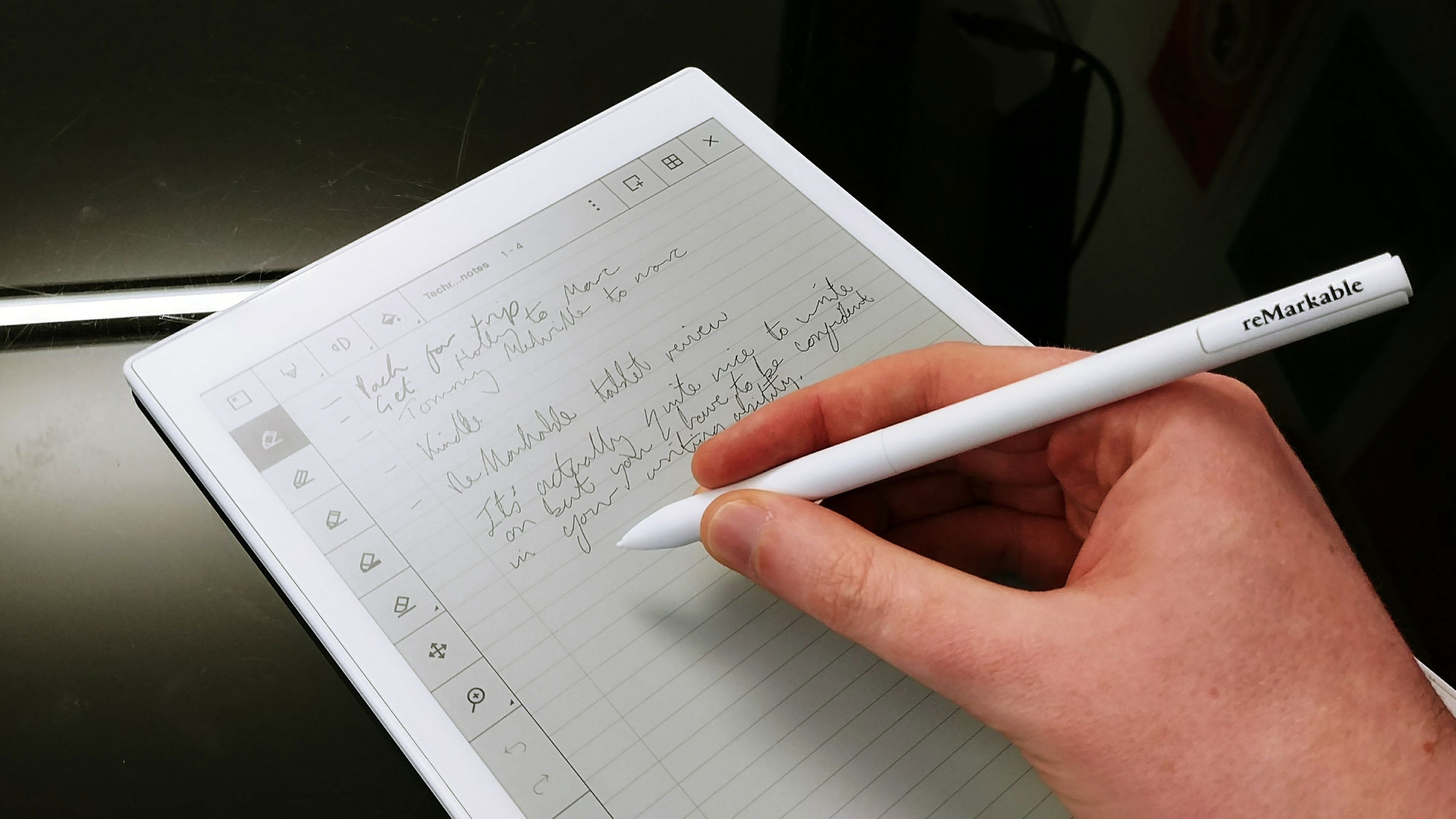TechRadar Verdict
It needs a bit of polish and a more affordable price tag, but the Remarkable shows there could yet be life for e-ink screens beyond the ereader.
Pros
- +
Sketching feels great
- +
Lots of page options
- +
A rare Kickstarter success
Cons
- -
Expensive for its slight feature list
- -
Ereader experience underwhelms
- -
Software awaiting key features
Why you can trust TechRadar
There was a time when the e-ink display looked to be on the verge of becoming ubiquitous in new tech products. As well as powering our ereaders they’d be used for low-power digital signage, wearable displays, price tags… you name it, ink was going 'e'.
But, as LCD screens have become more reliable and cheaper, it’s really only Amazon's Kindle line, and other ereaders, that have maintained (for consumers at least) a solid interest in e-ink. The Kickstarter-funded Remarkable tablet, being a slate-sized, cloud-connected sketchpad with an e-ink display, harks back to that time when e-ink seemed to be the display option of the future.
And while it’s too expensive, at £579 / $599 (around AU$760), and feature-light to wholeheartedly recommend, it’s an admirably novel product that will appeal to the more eccentric, forgiving gadget fan.
Design
The Remarkable tablet looks like a giant Kindle from several generations back. It’s not unattractive, but it’s certainly going for function over a flashy design. With a 10.3-inch monochrome e-ink screen, it’s close to the size of an A4 sheet of paper – which is exactly the point of the Remarkable tablet, as it gives you enough space to jot down notes and sketch images comfortably.

Though there’s no backlight, the high-quality display has a resolution of 1872 x 1404, giving it sharp 226dpi count. It’s multi-touch enabled and capacitive, meaning you don't need to use its bundled pen to navigate – your fingers will work just fine for jumping through menus, although only the pen can make marks on the digital page.
And it’s when you get the pen involved that the Remarkable starts making sense. It looks and feels just like a standard pen, except it makes use of a 'special high-friction tip'. With the screen offering 2,048 levels of pressure sensitivity, writing with the pen on the Remarkable feels closer to writing on a sheet of paper than any other digital pad out there, be that the Samsung Galaxy Note 8, or the iPad Pro.
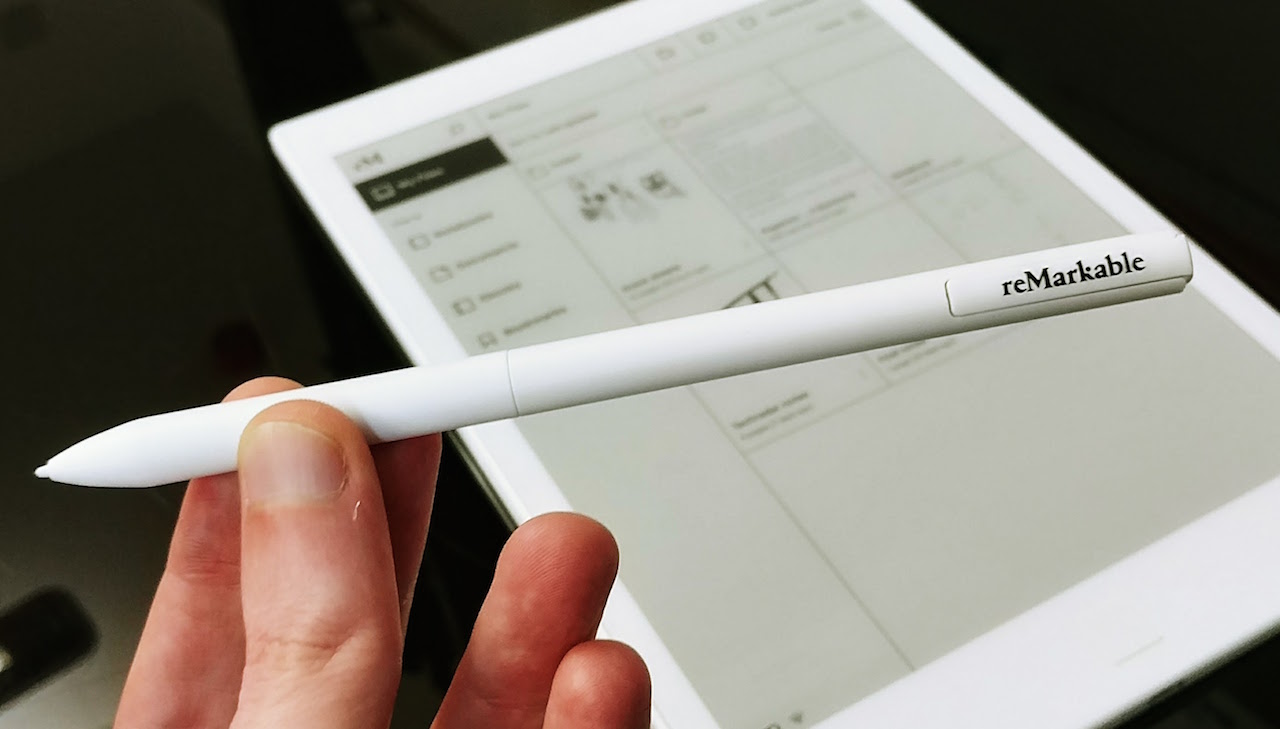
Recognizing the difference between your fingers, palm and pen, the Remarkable won’t smudge like ink, or incorrectly assume that your resting hand is a pen stroke. There’s no need to charge the pen either, although the friction-leveraging pen tips will wear out after about three months of regular use. Ten come in the box, but you’ll want to stock up for the lifetime of the tablet – packs of eight cost $12 / £12.
Sign up for breaking news, reviews, opinion, top tech deals, and more.
It’s a different experience to an LCD or OLED display then. But while it’s a much more natural-feeling writing experience, the screen is far less versatile than an LCD display. It lacks the color, lighting and refresh rate required for the app or browsing experience you’d expect from an iPad or similar, and so the Remarkable is limited to relatively simple sketching and ebook reading applications.

The Remarkable is charged via a micro USB port on the slate’s bottom edge, while the power button sits on its top edge; you give this a quick press to send the device to sleep, and a longer one to switch it off completely.
Three other square hardware buttons sit on the lower part of the front chassis, with the center one jumping you back to the home screen. The other two are for left and right page turns respectively, which feels a bit old-fashioned seeing as Amazon’s ereaders have for years offered the ability to turn pages in either direction comfortably with a single hand, thanks to additional controls.
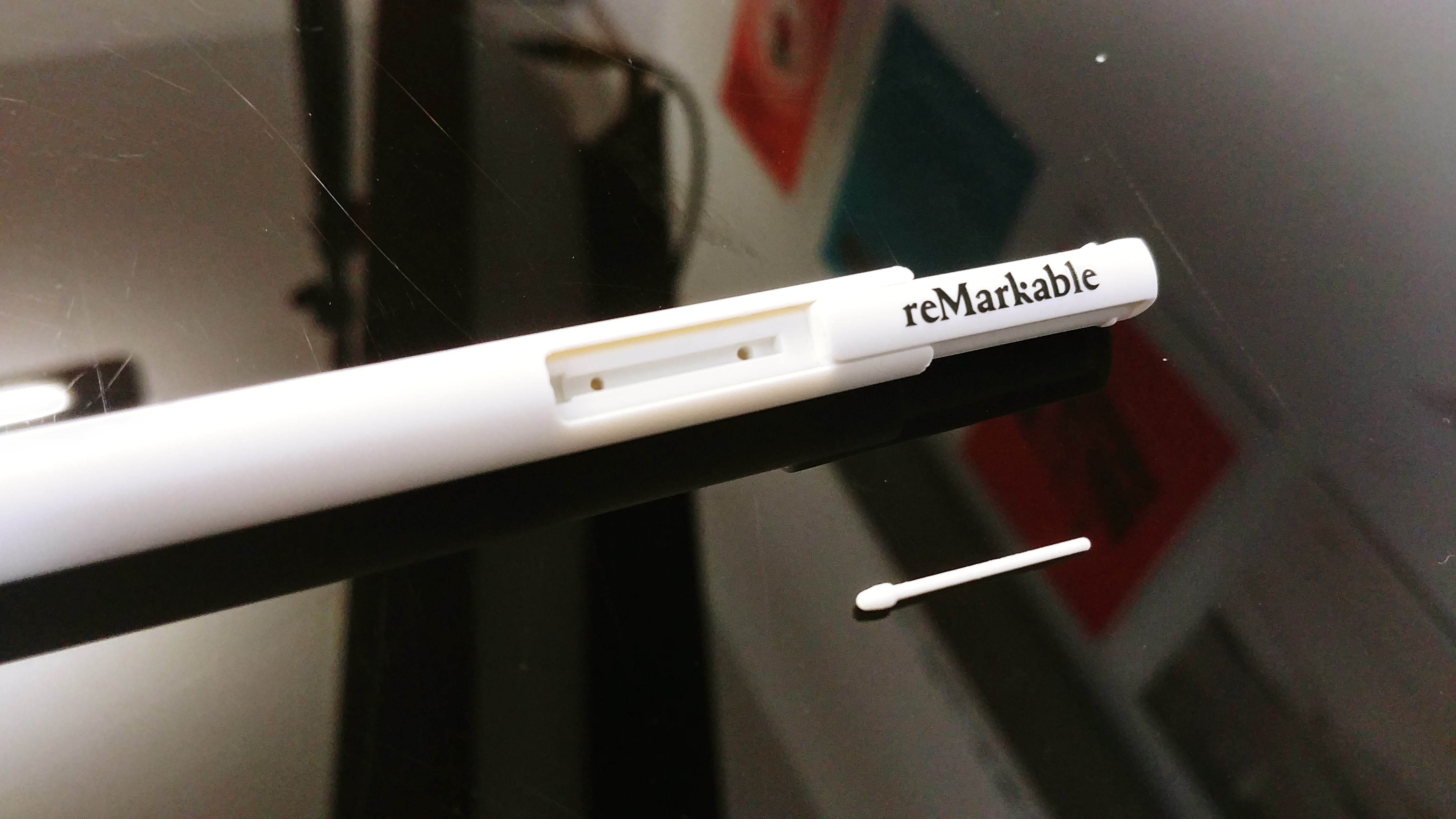
With the white-fronted casing and chrome rear, it’s a clean design overall. One nice touch is that there are slightly-raised rubberized strips on the rear, preventing the tablet from slipping on a table when in use. There’s also a simple, sold-separately felt carry case for the Remarkable, which includes a slot for slipping the pen into, with the pen’s clip itself sliding out to reveal a compartment for storing a backup nib.
Software
The Remarkable tablet runs its own OS, which is focused on sketching, reading and organizing your sheets into notebooks and folders. From the home screen, a right-hand pane lets you jump to hubs for your entire file collection, your individual notebooks, single documents, your ebook library and your bookmarked pages. Buttons at the top of the interface let you create new folders, notebooks and quick sketch sheets with a single tap.
All these elements can be viewed in a grid or list format. It’s simple, and you’ll quickly be able to navigate its functions upon opening it up. Those looking for the wide app support of iOS or Android tablets will be left wanting though – the Remarkable serves a very specific purpose.
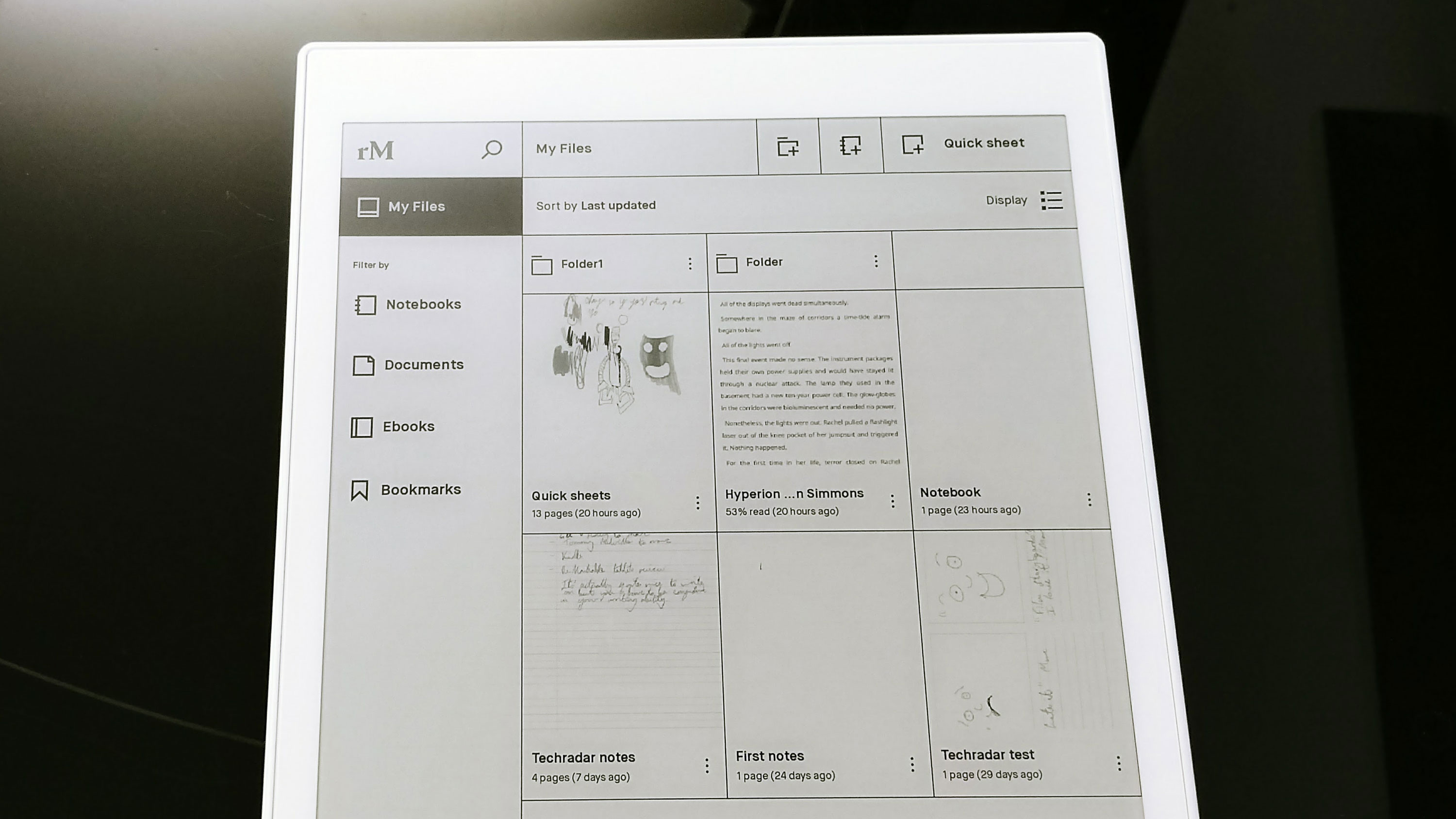
But it serves that main sketching and note-jotting purpose very well. Once you’re into a sketch sheet page, there are a wealth of options to choose from. There are more than 50 page templates to pick from, ranging from a simple blank page to a calendar planner to perspective sheets and storyboard layouts.
If you currently carry around a number of notebooks for different purposes, the Remarkable can easily replace them all (though apps for other tablets could likely offer a similar range more affordably).
The pen and brush options are varied too. There's an ink pen option with three different nib styles, a pencil, a felt tip with three different fill-shade options, and a highlighter. The first three options there have a variety of tip-size choices too, which lead to flexible drawing options when used in tandem with the pressure-sensitive screen.
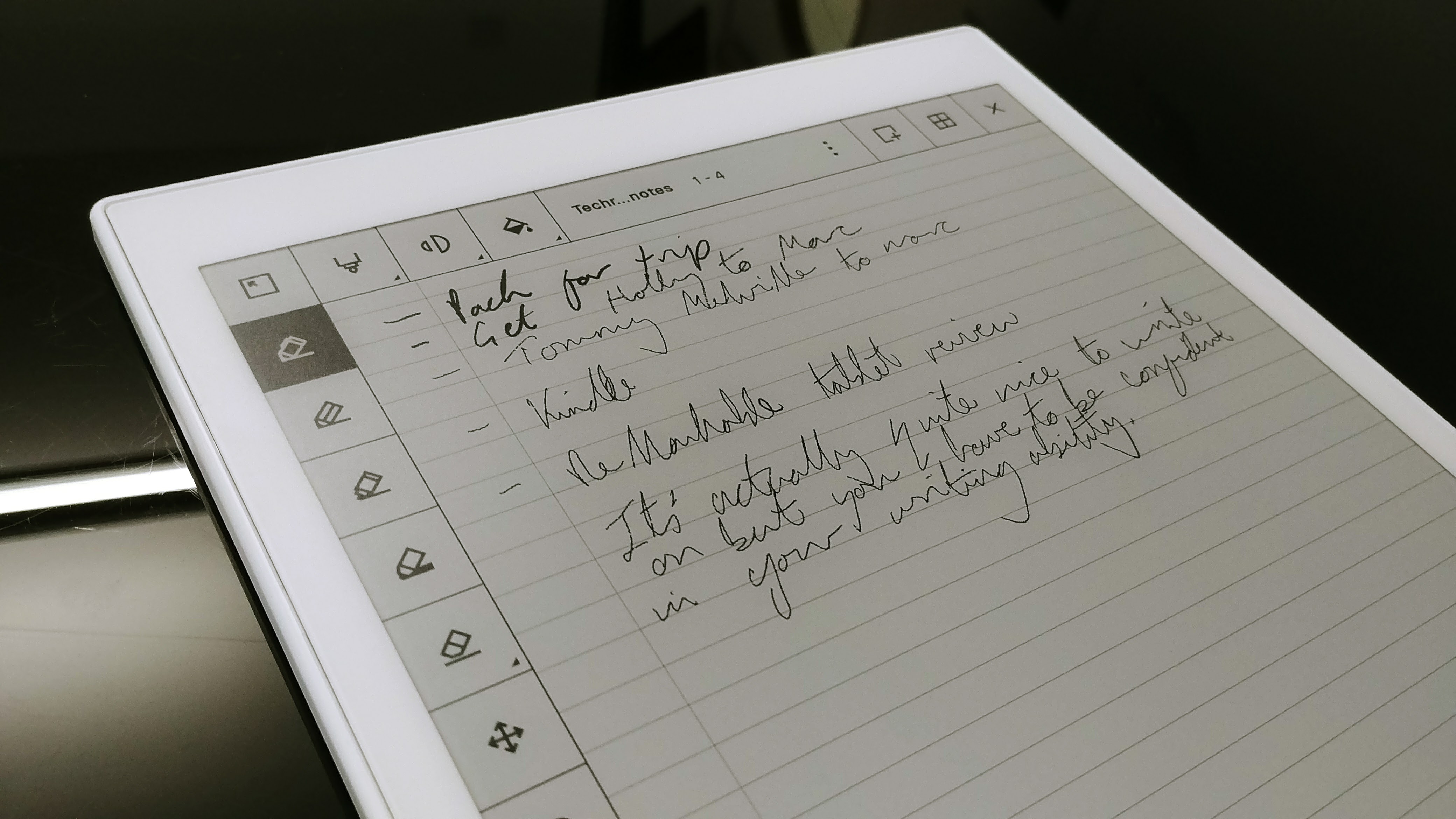
Undo and redo buttons allow for quick corrections, but there’s also an eraser that can be used as a scrubber, or as an area-select-and-delete tool. A magnifying glass lets you zoom in on specific portions of a page, while there’s also the ability to work in Photoshop-like layers, as well as a tool for selecting portions of a page and dragging them around to other points.
The zooming option is useful to have, but the relatively slow responsiveness of e-ink compared to an LCD can make moving around when zoomed in tiresome. All the page furniture can be hidden away in the corner for distraction-free work if needed.
With Wi-Fi functionality built into the tablet and a free cloud service included, the Remarkable will back up your notes wherever a web connection is present. The 8GB of built-in storage is good for about 100,000 pages, so having the ability to view those scribbles elsewhere is useful.

Mac, Windows, Android and iOS apps are available for moving those cloud-stored pages to, and it’s a relatively painless experience, with the apps mirroring the visual design of the tablet’s built-in software.
Frustratingly, you can’t currently print directly from the tablet, so you’re going to have to download pages through one of those apps and open them elsewhere in order to make hard copies if required.
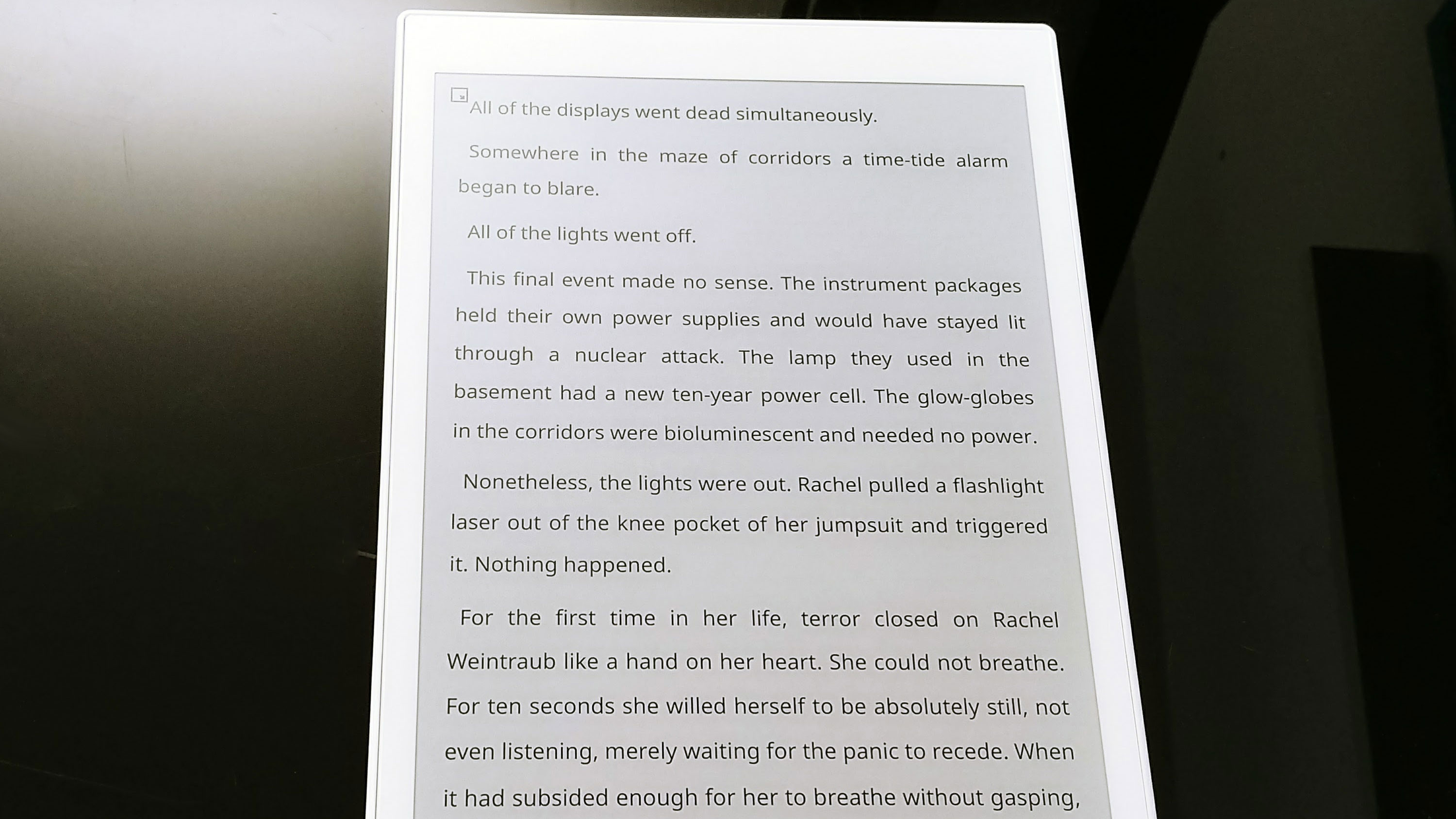
If you like the sound of reading ebooks on the large e-ink screen, that’s totally possible, but note that it’s not the feature-rich experience you’d get with a Kindle. Sure, you can quickly and easily annotate passages with the pen, but beyond that this is as basic an ereader as you can imagine.
Even jumping around a book is a chore – if you’re reading a book several hundred pages long and wish to jump to a specific passage you’re going to have to either go through a laborious number of page turns, or scroll through an equally painful amount of page lists or grids to find the point you want.
It’s fine for reading shorter texts in a linear fashion, but the slow page refresh speed alone would make dedicated readers look elsewhere. With menu options collapsing into the top-left corner, it’s possible for the 'expand' icon to overlap the first line of a page, too.

The set-up process for the cloud services could be streamlined too. You’ll need to head online to set up a Remarkable account, which then gives you a code which you need to input into the tablet to link you account to it. It feels a bit like busywork, and it's surprising that this stage isn’t integrated into the tablet itself.
It’s hard to shake the feeling that there’s lots left to come in terms of the Remarkable tablet’s software. Simple things like USB file transfer are missing, and there’s no bookstore for getting commercial content onto the device.
A few more features, such as handwriting recognition and third-party cloud service support are the sort of features that could really widen the usefulness and appeal of this tablet. All of the above and more are said to be in the works for the coming months, but the Remarkable would have felt a much more comprehensive device had it left the blocks with all these features baked in.
Performance
The Remarkable tablet makes use of a 1GHz ARM A9 CPU, backed up by 512MB of RAM. That’s fine for what you'll be doing on the device, although the relatively slow speed of page refreshes can frustrate.

E-ink displays only perform a full refresh when prompted, which is why they’re perfect for e-readers – as they don’t draw power often, the battery lasts much longer. They optionally don’t have to perform a full refresh either, which speeds up page turns significantly, although this can leave behind artefacts from the previous screen.
The Remarkable performs partial refreshes regularly, meaning it will easily see out a week before needing a recharge. However, for precision sketching, this can leave lots of ghost-like lines on a fresh blank page, with no option to force through a full refresh – particularly annoying when you're erasing elements. And then, when a full refresh does occur, it takes a distracting second to go through.
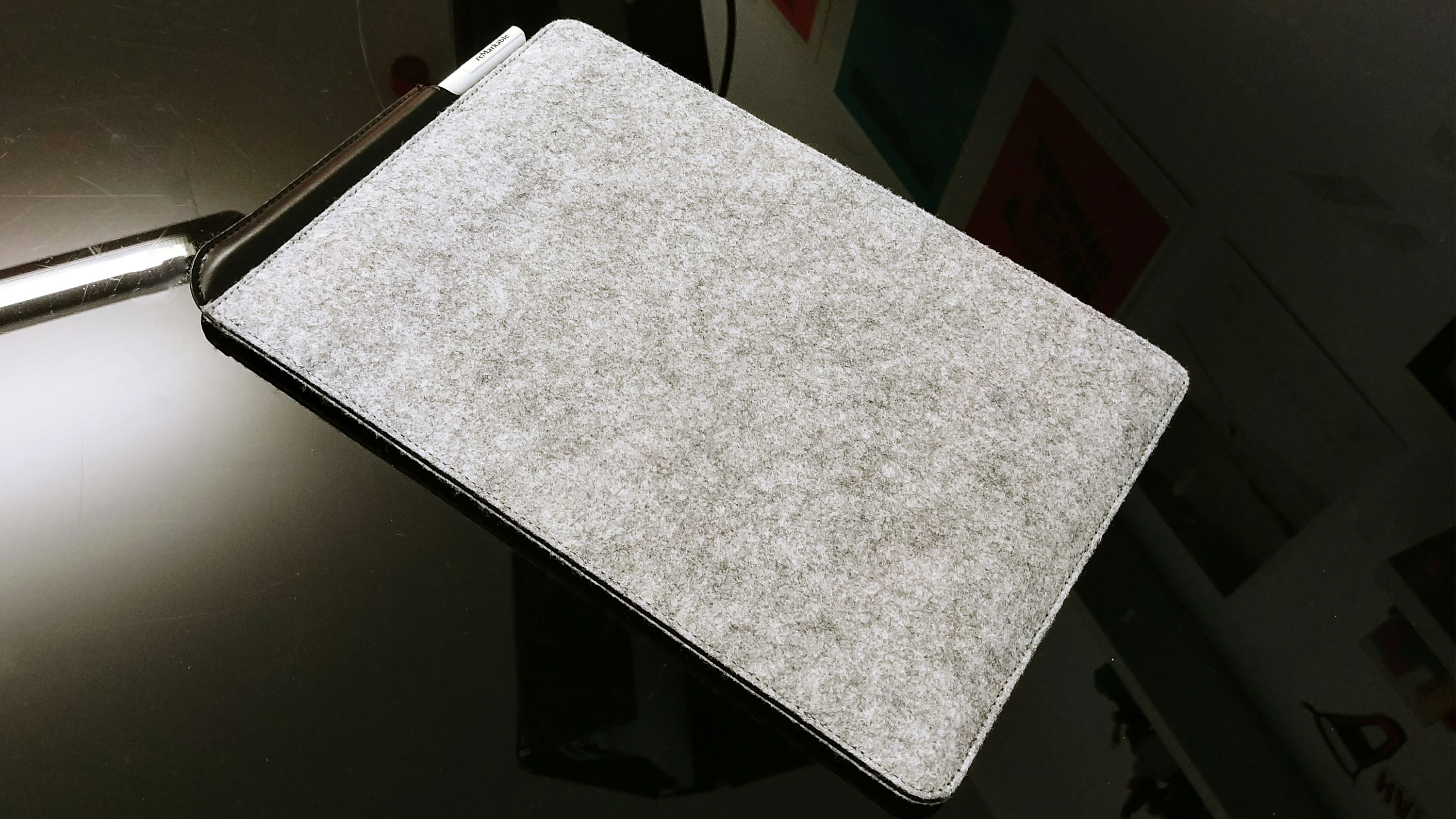
What can’t be knocked, though, is the feel of the pen on the screen itself. Combined with the multiple pen styles on offer, you have a full range of writing and drawing options at your disposal. Basil, TechRadar's resident artist, felt instantly at home with the Remarkable, declaring it the best non-paper device he’d scribbled on, at least in terms of the pen-to-page feel.
You may miss full color control if you want to create more vibrant artworks, but if it's line work you’re interested in, it ticks the boxes.
Verdict
The Remarkable tablet is a curious device then. Its USP is well realized, as it's one of best digital drawing and note-taking devices out there – provided you’re happy to work in monochrome, with the benefits and drawbacks its screen dictates.
But its software needs a lot of work to be considered feature-complete – and that’s before considering the mountains of iOS and Android apps it’ll never be able to support. In its defense, the Remarkable isn't intended to replace devices running those operating systems, but with its high price tag it may struggle to find an audience that’s not already well catered for with traditional tablet tech.
Look at the Venn diagram of crowdfunding prospectors, artists and paper enthusiasts, and the potential market for the Remarkable exists in that small area of intersection. It won’t gain wider appeal until the above issues are addressed, but within that niche it’ll likely find a dedicated fanbase.
You might also want to check out the ReMarkable 2 tablet review.

Gerald is Editor-in-Chief of Shortlist.com. Previously he was the Executive Editor for TechRadar, taking care of the site's home cinema, gaming, smart home, entertainment and audio output. He loves gaming, but don't expect him to play with you unless your console is hooked up to a 4K HDR screen and a 7.1 surround system. Before TechRadar, Gerald was Editor of Gizmodo UK. He was also the EIC of iMore.com, and is the author of 'Get Technology: Upgrade Your Future', published by Aurum Press.
